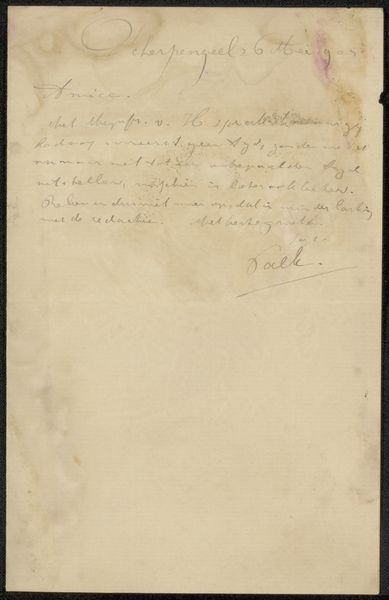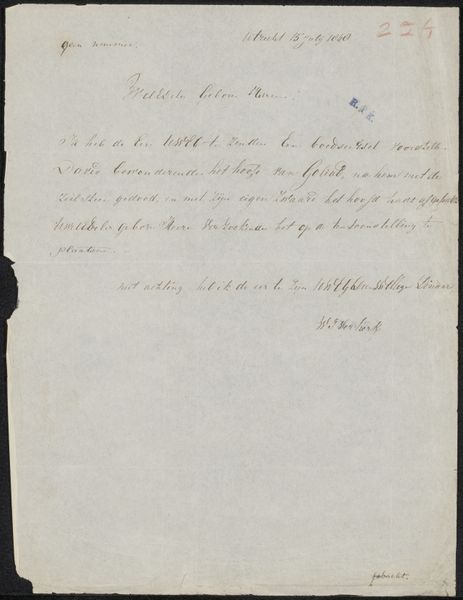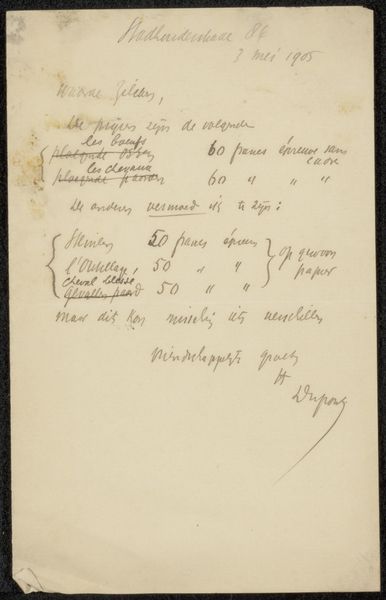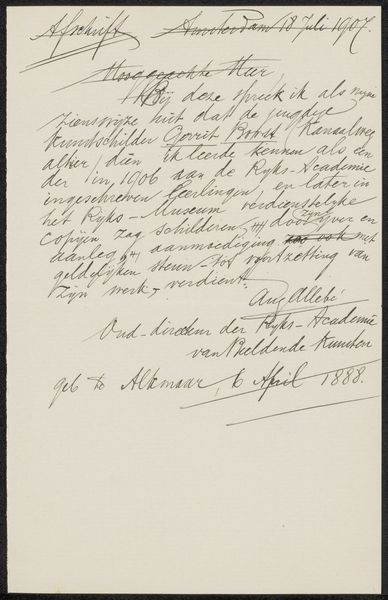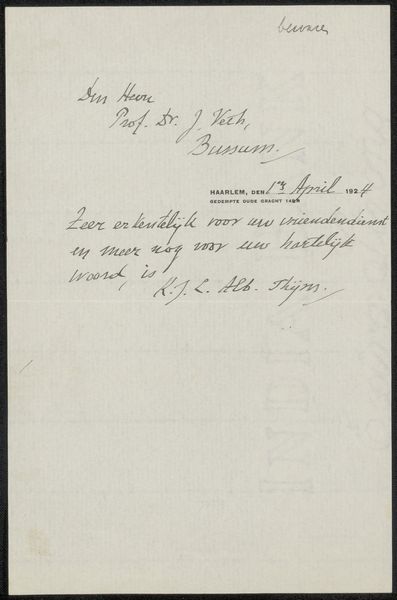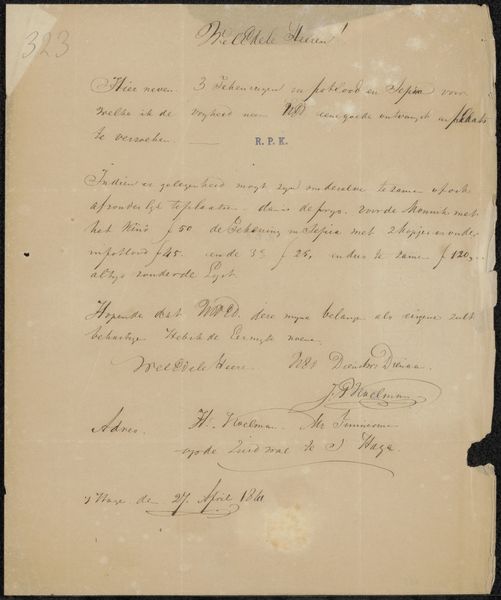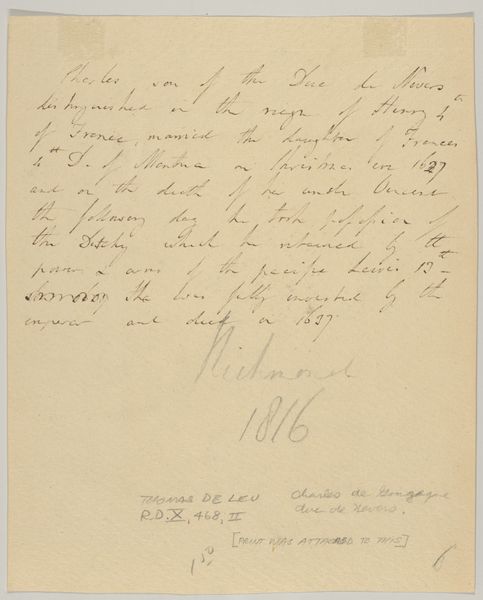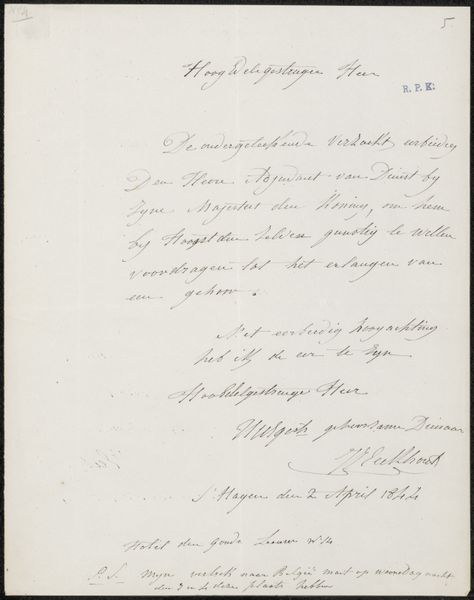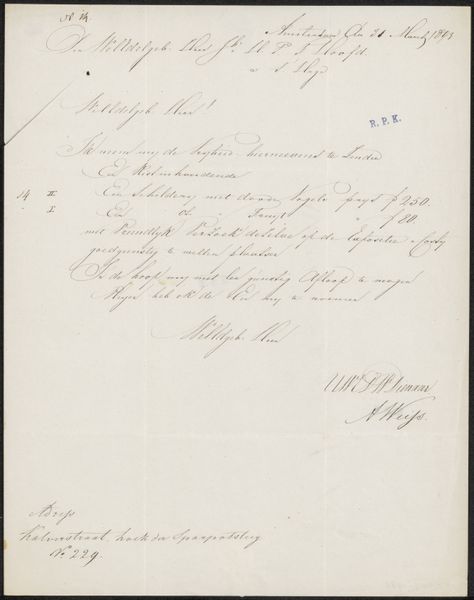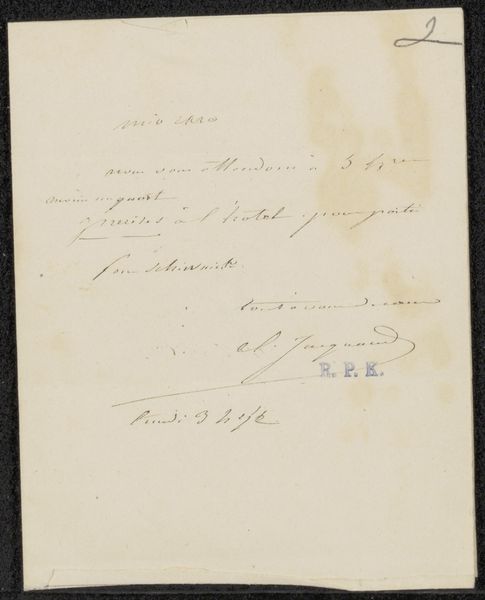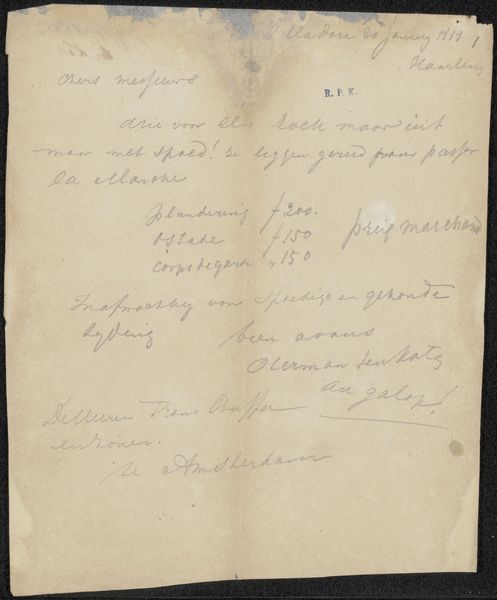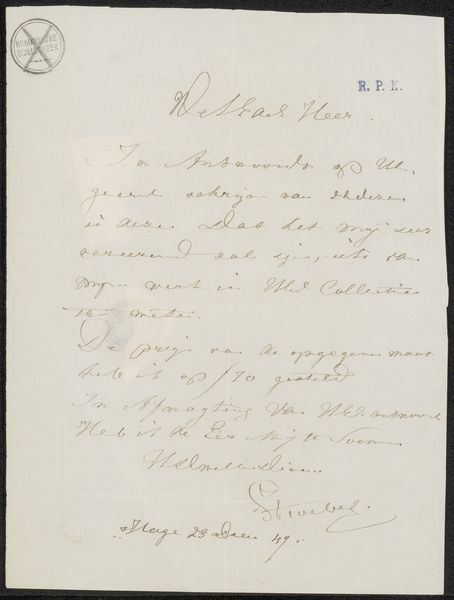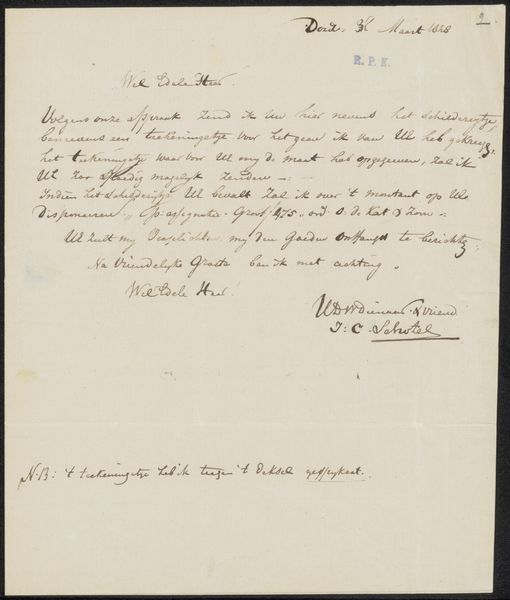
drawing, paper, ink
#
portrait
#
drawing
#
paper
#
ink
#
calligraphy
#
monochrome
Copyright: Rijks Museum: Open Domain
Editor: This work is titled "Aantekening uit archief Jan Veth," a note from the Jan Veth archive, made before 1984. It's ink on paper, a monochromatic drawing with beautiful calligraphy. The paper seems aged, fragile almost. What strikes you about this piece? Curator: The inherent labor involved is quite telling. Look at the physical act of handwriting, the pressure applied to the nib, the skill in forming the letters. Before widespread printing and computers, writing was a specialized craft. Editor: It's interesting to think of handwriting as labor, and not just communication. How does the choice of materials – the ink and paper – play into that? Curator: Precisely. Paper wasn't always readily available or affordable. The quality of the paper, the type of ink – these were material choices that reflected status, purpose, even the societal value placed on the written word itself. Are these records related to other works or other artists? How are these records archived and consumed? Editor: That makes sense. I hadn't considered the socio-economic implications of simply having the resources to create such a document. So, are you suggesting that examining the material conditions of its creation gives us a deeper understanding of the work? Curator: Absolutely. By analyzing the materials, the means of production, and the social context, we can challenge the traditional boundaries of art history. It moves beyond aesthetics to examine the tangible processes that shaped our cultural heritage. Editor: So, looking at what was needed to produce art helps us understand what art meant for those making it, and what those materials meant to their society? Thank you! Curator: My pleasure. And hopefully it’s given you a greater appreciation for something as seemingly simple as ink on paper.
Comments
No comments
Be the first to comment and join the conversation on the ultimate creative platform.
